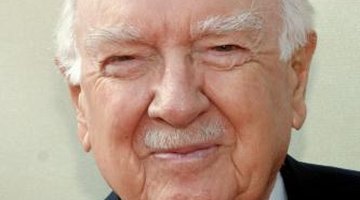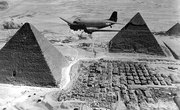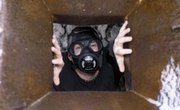The Vietnam Conflict, which lasted from 1965 to 1973, was the first televised war in American history. This media coverage differed from that of past wars. In this era before cable television, whole families still gathered to watch the evening news. The nightly coverage of the action in Vietnam and the streets of America went unnoticed by few. As a result, television was a major factor in American society‘s perception of the war. The Vietnam Conflict created distrust between people and the government, provided war protestors with an audience and altered the perception of the American fighting “man.”
Balanced Coverage
American television provided what was essentially some of the most objective war reporting to date. Military authorities granted journalists unparalleled access to the troops. It was the responsibility of the networks to censor material. There was no federal Committee on Public Information managing the overall portrayal of events, as occurred in World War II. Instead, during the Vietnam era, Americans received television coverage of the war that included both successes and failures.
Tet Offensive, January 1968
During Tet, the Vietnamese Lunar New Year, the North Vietnamese Communist enemy launched a sneak attack in South Vietnam against American facilities. Though American and the allied South Vietnamese troops won the battle, the television images shocked viewers who thought the enemy had long been contained. Earlier, in 1967, General William C. Westmoreland, the commander of American troops, claimed that things were going well in Vietnam and that there was “light at the end of the tunnel.” Americans, who had never lost a war, implicitly trusted the commander. Then, one morning, people awoke to television images of enemy forces on the grounds of the American embassy in Saigon. Walter Cronkite, of CBS News, famously predicted that the war would end in a stalemate, increasing the anxiety of viewers. Faced with this loss in public confidence, President Lyndon Baines Johnson soon announced that he would not run for re-election.
Protests
Since there was no cable television, most Americans only had access to the three major networks (ABC, CBS and NBC). These broadcasters reported the events from Vietnam in three-minute clips each night. War protestors, in particular, strategically planned their events to receive as much airtime as possible. The Vietnam Conflict was the first instance where protestors had the ability to state their case directly to the American people.
Diversity
American troops in Vietnam served in racially integrated units. The public witnessed the races coexisting in the heat of battle. Albeit forced together by the unfortunate necessity of war, the ability of these young men to unite contrasted sharply with the ongoing, racially charged urban riots in American cities. The portrayal of Vietnam-era troops on television also challenged the racially homogeneous images of the troops during the two World Wars. Television helped Vietnam, America’s first fully integrated war, transform the perception of the American military. The diverse military of the 21st century had its birth during this period.
Related Articles
References
Resources
Writer Bio
David Kenneth has a Ph.D. in history. His work has been published in "The Journal of Southern History," "The Georgia Historical Quarterly," "The Southern Historian," "The Journal of Mississippi History" and "The Oxford University Companion to American Law." Kenneth has been working as a writer since 1999.











